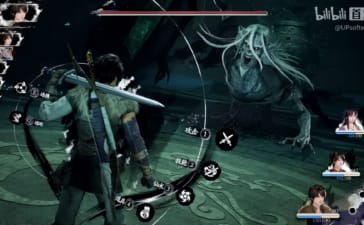For those willing to tackle its sharp edges, Hollow Knight: Silksong is extraordinary. It’s a game made with conviction, uncompromised by trends or shortcuts.
Hollow Knight: Silksong may be known for its long wait to launch, but that wait was well worth it.
Eight years is a long time in games. When Hollow Knight first launched back in 2017, it was a surprise Australian success story. A tiny studio in Adelaide, Team Cherry, brought us a hand-drawn world of melancholy bugs and punishing yet precise combat. It spawned a devoted community and became one of the most beloved Metroidvania titles of all time.
From the very moment the sharp-tongued Hornet leapt across our screens in Hollow Knight, we all wanted to play as her. That seed eventually became Hollow Knight: Silksong. After years of silence, memes, speculation, and daily Silksong news updates from desperate fans, the sequel has finally arrived.
The question was never if Hollow Knight: Silksong would live up to its predecessor, but how. The original game was lightning in a bottle, and I can say with confidence that lightning strikes twice. Silksong isn’t just another Hollow Knight, but a different beast entirely. One that embraces speed, agility, and scale.
With the same velocity, Hollow Knight: Silksong wastes no time throwing you into its world. Hornet is kidnapped from Hallownest and whisked away to a new kingdom called Pharloom. She escapes her captors and begins an ascent toward the Citadel at the kingdom’s peak, seeking retribution for her capture and uncovering layers of mystery along the way.
Where the original game was cryptic, Hollow Knight: Silksong has a clearer narrative. Hornet is a character with a voice and purpose who is persistently climbing toward answers, piecing together why she was taken and what role the silk-wrapped land expects her to play.
That said, Team Cherry still thrives on subtlety. Much of the story is buried in item descriptions, NPC text dialogue, and environmental clues. I found myself reading and letting my imagination stitch together the gaps. It’s a game that trusts you enough to dig deeper, and if you do, you’ll uncover a rich story.
One early moment I can share is arriving at Greymoor, a dreary area filled with broken towers and darkness. After pushing through the green Far Fields, you eventually whip up to the surface and break through to the bleak zone for the first time. I wandered upon a quiet refuge inn, absorbed the personality of the characters and the new space around me, and rested before heading into the unknown once again. There was no quest marker or cutscene, just a moment of discovery. That’s where Hollow Knight: Silksong shines, lore marrying atmosphere.
Making the most of this world around her, Hornet’s playstyle transforms the game. She’s faster and nimbler than the Knight ever was. Her needle weapon has greater reach, her movement chains together with attacks, and she can mantle ledges and run across platforms with speed.
Hornet is agile and hits hard, but enemies hit harder. Many deal two masks of damage right from the start, and they’re often countering your offence. Flying foes dodge your strikes and ground enemies can parry. Every encounter forces you to engage with Hornet’s full toolkit, meaning old habits, spamming slashes and relying on knockback just don’t work here. Hollow Knight: Silksong‘s combat demands your attention and precision.
At first, I struggled. I died dozens of times in the opening hours, flailing against punishing enemies. But then something clicked. The more I leaned into Hornet’s speed, the more combat worked for me. It became less about brute force and more about dancing through patterns, dodging, and striking at perfect moments.
In the best way possible, Hollow Knight: Silksong‘s fights now feel like a choreographed dance. For example, the Fourth Chorus, a colossal mechanical beast whose attacks sync with a booming choir. Dodging its swipes while hearing that chant rise in intensity was equal parts spectacle and watchful timing. Or Lace, a swift opponent whose challenging encounters almost feel like a graceful trading of moves until one bug is left standing.
But even at its most challenging, I rarely stopped because movement in Hollow Knight: Silksong is simply freeing and fun. You’ll often not even have a map to refer to and find yourself just enjoying exploring new spaces blindly. Hornet’s diagonal strikes, sprint and dash make traversal feel fluid, and the pacing of adding finding abilities and crests to string them all together delivers satisfying progression.
A lot of this freedom comes from changes to how healing works. Where the Knight had to channel soul to restore a single mask of health, Hornet can spend silk to instantly regain three. The catch is that the same resource powers her special attacks, creating constant trade-offs and deeper thinking about how you use silk. More than once, I found myself hovering over the heal button mid-boss fight, torn between patching myself up or saving silk for a final desperate counter.
A similar push and pull carries into Hollow Knight: Silksong‘s new quest system, called Wishes. These objectives encourage exploration and draw you back to earlier areas, giving Pharloom a sense of life. Yet the way they’re presented feels at odds with the game’s atmosphere. Each quest arrives with a big pop-up menu and tracking, which can make the experience feel more like ticking boxes. I understand it’s a vehicle to demonstrate the influence of completed Wishes on endings, making the game’s story more accessible, but the constant prompts broke my immersion. It didn’t feel natural.
My thoughts on the Wish system may be subjective, but there are still definite flaws in Hollow Knight: Silksong. Early in the game, the Far Fields area locks you into grinding 25 spine cores from enemies, a tedious detour that breaks the game’s momentum. A specific design decision to keep the player in the space until they completed the quest and obtained a new ability to continue, rather than letting you backtrack and become even more confused. Unfortunately, the issue isn’t with the player choice but a critical ability being locked behind a quest. This didn’t pay off, like a few other design decisions across the journey such as harsh placement of some rest benches.
Despite these frustrations, the pure beauty of Hollow Knight: Silksong is undeniable. If you thought the first game was stunning, then this is a masterpiece. The hand-drawn art is sharper, with smoother animation and more varied environments. Pharloom is living and breathing with mossy grottos dripping with dew and glittering halls of the Citadel. Every new area feels distinct yet cohesive, stitched together by Ari Gibson’s unmistakable art style. I often paused just to soak in the details in both the foreground and background.
Christopher Larkin returns on soundtrack duty, and once again he’s outdone himself. The score balances melancholy and majesty, with music more prominent in gameplay than before. Underworks’ heavy and brooding score with subtle elevation sets the tone of the area, as does Lace’s themes and how they evolve at each encounter. Especially during boss fights, this is some of the best music I’ve heard in a game this year.
Sound design adds another layer. Impacts are weighty and the bug voices are distinct. Little details, like the rustle of silk or the echo of footsteps in a cavern, make Pharloom feel tangible. If you’ve already started playing, you know that Shakra’s chant is going to be stuck in your head for a long time. Hollow Knight: Silksong has elevated audio to a masterful level.
The short of it is, Hollow Knight: Silksong is not an easy game. It’s punishing and sometimes unfair in its design. There were moments, usually after a death on a reckless corpse run, when I wanted to throw my Steam Deck. Yet, every time I pushed through the reward was fulfilling. Beating a boss after hours of struggle is euphoric. Discovering a hidden chamber or unlocking a new silk skill gave me the rush of genuine adventure.
For those willing to tackle its sharp edges, Hollow Knight: Silksong is extraordinary. It’s a game made with conviction, uncompromised by trends or shortcuts. Team Cherry once again proves that a small Adelaide studio can deliver something world-class, something that rivals and even surpasses the biggest names in gaming.









